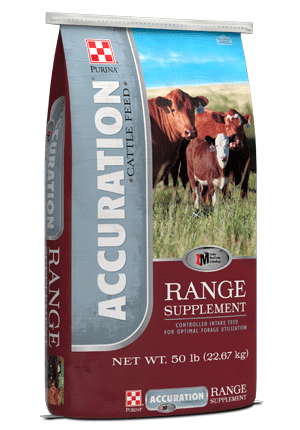
Cattle Fetal Programming 101
Management : Cow & Calf
Management : Replacement

Researcher David J. Barker discovered malnourished human fetuses are more likely to have long term disease consequences later in life.
His work was applied to bred cows, delivering us the concept we know today as cattle fetal programming.
Knowledge of cattle fetal programming helped the cattle industry think about cattle nutrition differently. Well-nourished bred cows develop nourished fetuses, which generally result in healthy, hardy calves with long-term potential.
Essentially, methylation is turning on or off specific genes. Fetal nourishment can impact biological processes, such as growth, fertility and more, once the calf is born.
Changing forages can cause a gap in cattle nutrition, which can easily go undetected. Quality and quantity change with the weather, and it’s essential to have a plan in place to make sure bred cows are getting proper nutrition. Simple supplementation can help meet bred cows needs year-round.
Think about supplementation in terms of meeting fetus needs, too. It’s important to not just think about meeting the needs of bred cows—make sure their eventual offspring get proper nourishment to maximize its genetic potential.
The rule of thumb is that it takes 6 or 7 years for a cow to break-even and become profitable, but the average cow age in the United States is not 6 or 7. By keeping cattle fetal programming in mind when managing bred cows, we can positively impact cow fertility, cow longevity and herd sustainability.
Today’s cattle fetal programming knowledge is just the tip of the iceberg — it’s a concept the cattle industry will continue to research and explore.
Learn more about the connection between cow fertility, cow longevity and cattle nutrition.
1 Du M, Tong J, Zhao J, Underwood KR, Zhu M, Ford SP, Nathanielsz PW. Fetal programming of skeletal muscle development in ruminant animals. J Anim Sci. 2010;88:E51-E60. Accessed July 16, 2019. Available from: https://www.aipro.info/wp/wp-content/uploads/2017/08/Fetal_programming_skeletal.pdf
His work was applied to bred cows, delivering us the concept we know today as cattle fetal programming.
Knowledge of cattle fetal programming helped the cattle industry think about cattle nutrition differently. Well-nourished bred cows develop nourished fetuses, which generally result in healthy, hardy calves with long-term potential.
What is cattle fetal programming?
Cattle fetal programming is the concept that a maternal stimulus or insult at a critical period in fetal development has long term effects on the offspring. Any stressor can be an insult, including inferior cattle nutrition, and can cause DNA methylation in the developing fetus. The DNA itself cannot change, but DNA methylation will cause the activity of the DNA to change, meaning genes will be expressed differently.Essentially, methylation is turning on or off specific genes. Fetal nourishment can impact biological processes, such as growth, fertility and more, once the calf is born.
"Managing" cattle fetal programming
A deficiency or shortage in bred cow nutrition can seriously jeopardize the future calf’s potential. There’s no acceptable time to make a cow ‘rough it’ and back off nutrition. You’ve got to provide adequate minerals, protein and energy during every trimester to set up the fetus and eventual calf for success.Changing forages can cause a gap in cattle nutrition, which can easily go undetected. Quality and quantity change with the weather, and it’s essential to have a plan in place to make sure bred cows are getting proper nutrition. Simple supplementation can help meet bred cows needs year-round.
Think about supplementation in terms of meeting fetus needs, too. It’s important to not just think about meeting the needs of bred cows—make sure their eventual offspring get proper nourishment to maximize its genetic potential.
Cow longevity and cow fertility
If you’re raising replacement heifers, it’s imperative to understand the role fetal programming plays in cow longevity and cow fertility. Nutrition that bred cows receive this year can affect cow fertility for the next 8 to 12 years through not only their daughters, but also their grand and great granddaughters.1 Since cow fertility is a primary profitability indicator in cow/calf operations, it’s important to not overlook the long term implications of today’s cattle nutrition decisions.The rule of thumb is that it takes 6 or 7 years for a cow to break-even and become profitable, but the average cow age in the United States is not 6 or 7. By keeping cattle fetal programming in mind when managing bred cows, we can positively impact cow fertility, cow longevity and herd sustainability.
The future of cattle fetal programming
Geneticists are trying to establish which genes are most affected through cattle fetal programming and how we might be able to provide therapy to overcome DNA methylation due to cattle nutrition deficiencies.Today’s cattle fetal programming knowledge is just the tip of the iceberg — it’s a concept the cattle industry will continue to research and explore.
Learn more about the connection between cow fertility, cow longevity and cattle nutrition.
1 Du M, Tong J, Zhao J, Underwood KR, Zhu M, Ford SP, Nathanielsz PW. Fetal programming of skeletal muscle development in ruminant animals. J Anim Sci. 2010;88:E51-E60. Accessed July 16, 2019. Available from: https://www.aipro.info/wp/wp-content/uploads/2017/08/Fetal_programming_skeletal.pdf


